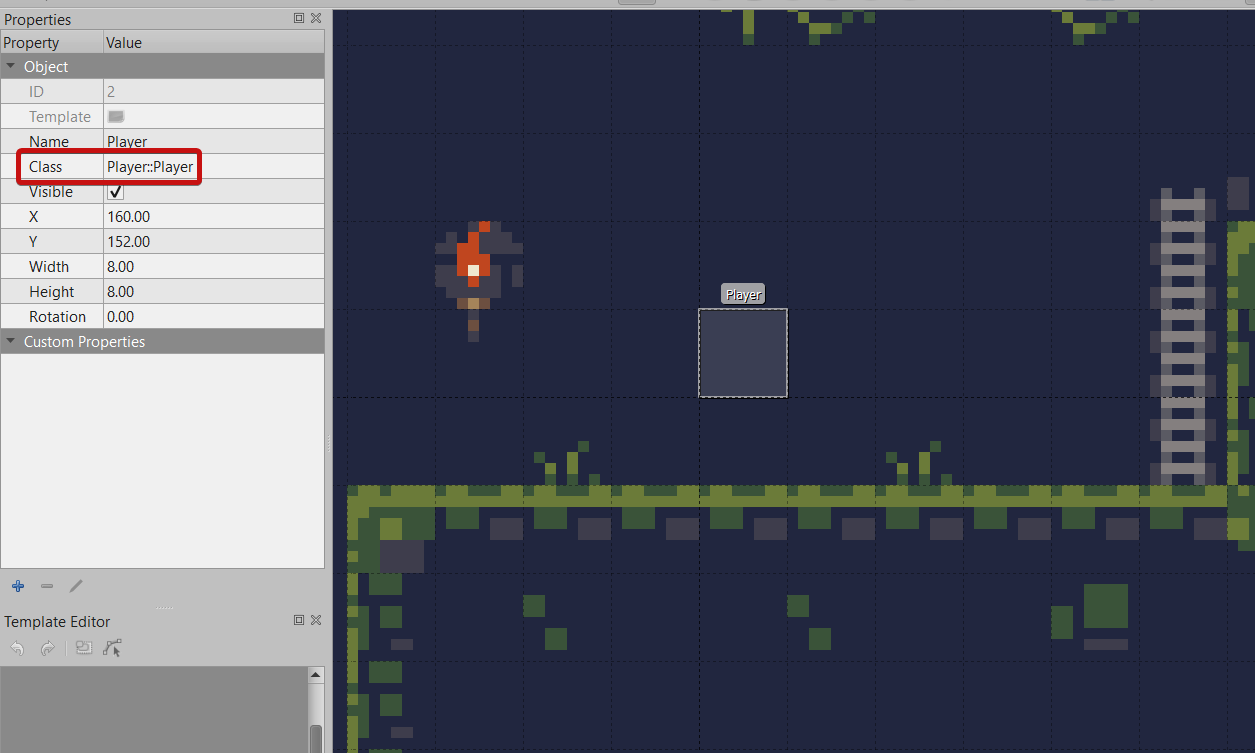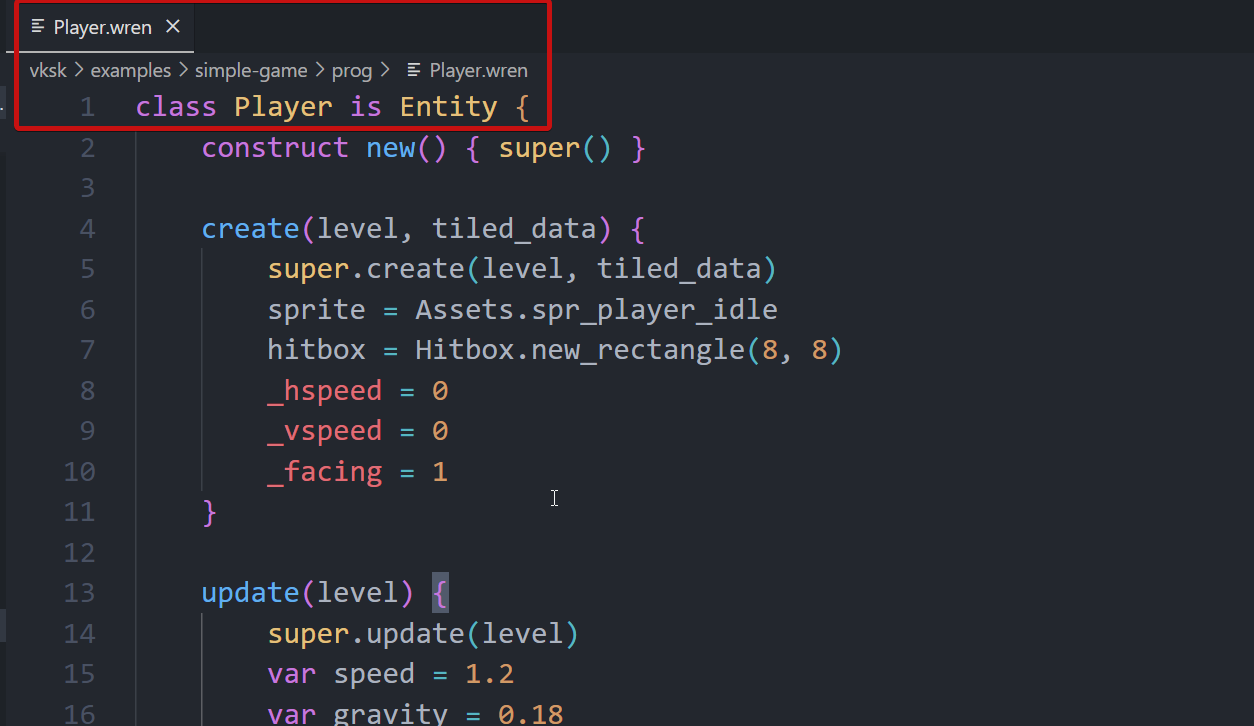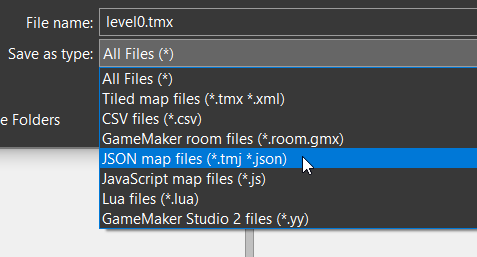Tiled Integration
Astro supports the use of Tiled as a level editor. With the use of load() we can load a Tiled map and create all the necessary entities and tilesets in it automatically.
Overview
In short you load Tiled maps by calling load() in your level’s create method with the desired map filename.
load() will:
- Make copies of each tile layer as a new Tileset in the returned map
- Create entities from each entity layer by looking up their
classfield (See get_class() for formatting information). - Automatically set each entity’s starting x/y position as well as a hitbox if width and height were specified
- Pass a map of all other tiled data to each entity when its created


In the above example, the class field in Tiled is set to Player::Player, meaning the class Player inside the module Player. For clarity’s sake, Entities::Water would mean the class Water inside the module Entities. All the other fields above and below class are passed to entities when they are created. See create().
How To Use Tiled
There are some things you need to do on Tiled’s side so that Astro knows how to load the map properly.
- All maps must be saved in JSON format, see below image.
- Tilesets must be embedded (it pulls the images from the asset compiler, there are no duplicate image loads).
- Object’s class file must be the entity’s class name in the format
file::class, for example if wanted to specify thePlayerclass in the fileGame/Player.wrenwe would useGame/Player::Playerfor the class field. - Object templates are not currently supported, you must detach all object templates before using it in-engine.
